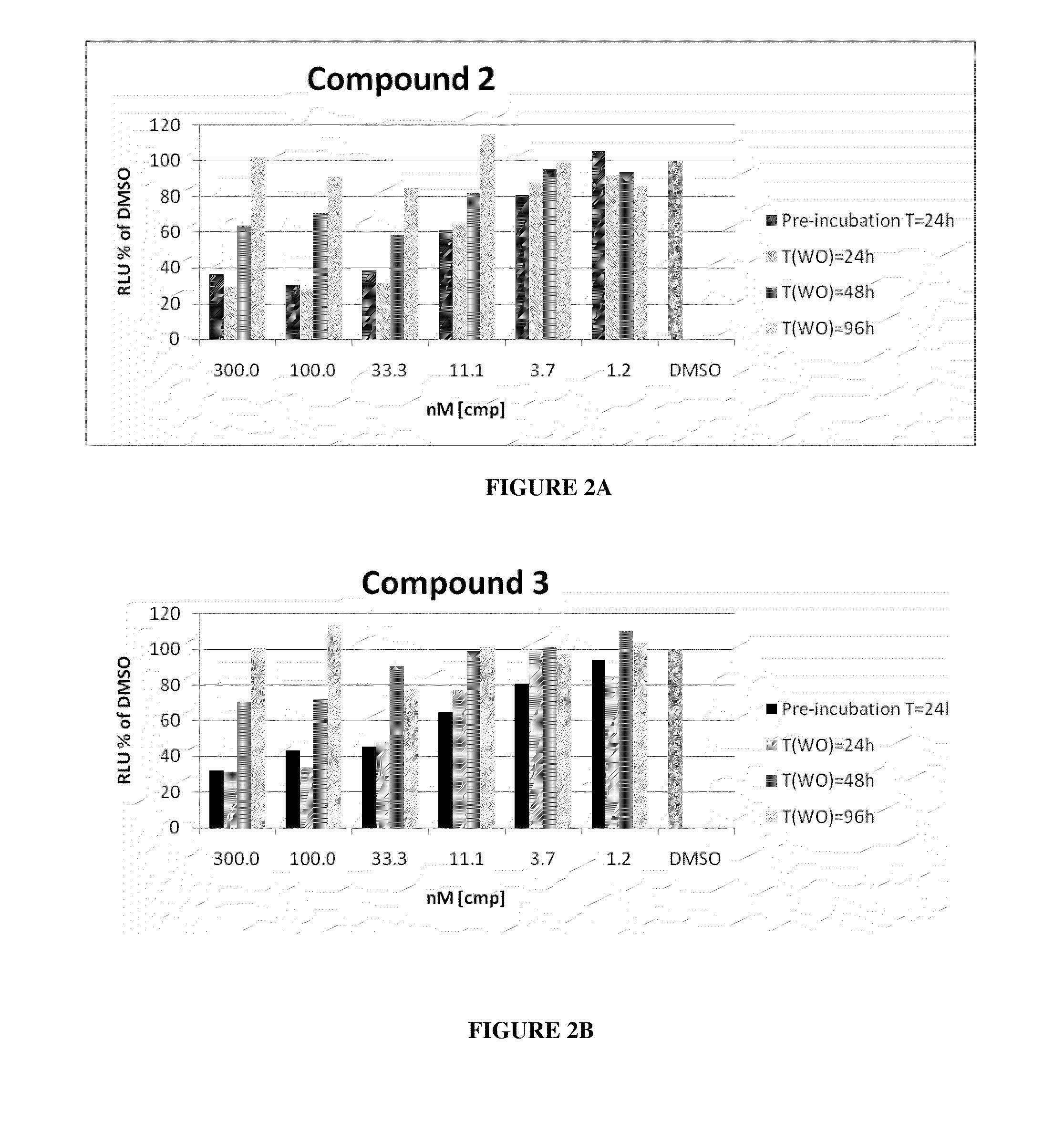Methods for identifying hcv protease inhibitors
a protease inhibitor and hcv technology, applied in the field of methods for identifying hcv protease inhibitors, can solve the problems of hcv infection, hepatocellular carcinoma, and inability to direct measure hcv protease into its self-cleavage products,
- Summary
- Abstract
- Description
- Claims
- Application Information
AI Technical Summary
Benefits of technology
Problems solved by technology
Method used
Image
Examples
example 1
Single Chain HCV Protease (Wt) Peptide Expression and Purification
[0121]Wild type HCV protease was obtained from Bioenza (Mountain View, Calif.) and may also be prepared as described below.
[0122]The single-chain proteolytic domain (NS4A21-32-GSGS-NS33-631) was cloned into pET-14b (Novagen, Madison, Wis.) and transformed into DH10B cells (Invitrogen). The resulting plasmid was transferred into Escherichia coli BL21 (Novagen) for protein expression and purification. Briefly, the cultures were grown at 37° C. in LB medium containing 100 μg / mL of ampicillin until the optical density at 600 nm (OD600) reached 1.0 and were induced by addition of isopropyl-β-D-thiogalactopyranoside (IPTG) to 1 mM. After an additional incubation at 18° C. for 20 h, bacteria were harvested by centrifugation at 6,000×g for 10 min and resuspended in a lysis buffer containing 50 mM Na3PO4, pH 8.0, 300 mM NaCl, 5 mM 2-mercaptoethanol, 10% glycerol, 0.5% Igepal CA630, and a protease inhibitor cocktail consisting ...
example 2
Cloning and Expression of HCV Protease A156S, A156T, D168A, D168V Drug-Resistance Mutants and C159S Variant
[0123]The mutant DNA fragments of NS4A / NS3 were generated by PCR and cloned into pET expression vector. After transformation into BL21 competent cells, the expression was induced with IPTG for 2 hours. The His-tagged fusion proteins were purified using affinity column followed by size exclusion chromatography.
example 3
In Vitro Transcription
[0124]In vitro transcripts of HCV positive strands were generated by using the protocol described by Lohmann V et al 2003. For transcription of positive-strand HCV RNAs, plasmid DNA (pFK 1341 PI-Luc / NS3-3′ / ET, obtained from ReBLikon Gmbh (Heidelberg, Germany), was digested with AseI followed by Sca1. After restriction digest, DNA was extracted with phenol and chloroform, precipitated with ethanol, and dissolved in RNase-free water. In vitro transcription reactions contained 80 mM HEPES (pH 7.5), 12 mM MgCl2, 2 mM spermidine, 40 mM dithiothreitol, a 3.125 mM concentration of each nucleoside triphosphate, 1 U of RNasin. 5 μg of restricted plasmid DNA and 80 U of T7 RNA polymerase (Promega) was used. After 2 h at 37° C., an additional 40 U of T7 polymerase was added, and the reaction was incubated for another 2 h. Transcription was terminated by the addition of 1 U of RNase-free DNase (Promega) per μg of plasmid DNA, followed by incubation for 30 min at 37° C. Aft...
PUM
| Property | Measurement | Unit |
|---|---|---|
| Time | aaaaa | aaaaa |
| Time | aaaaa | aaaaa |
| Time | aaaaa | aaaaa |
Abstract
Description
Claims
Application Information
 Login to View More
Login to View More - R&D
- Intellectual Property
- Life Sciences
- Materials
- Tech Scout
- Unparalleled Data Quality
- Higher Quality Content
- 60% Fewer Hallucinations
Browse by: Latest US Patents, China's latest patents, Technical Efficacy Thesaurus, Application Domain, Technology Topic, Popular Technical Reports.
© 2025 PatSnap. All rights reserved.Legal|Privacy policy|Modern Slavery Act Transparency Statement|Sitemap|About US| Contact US: help@patsnap.com



